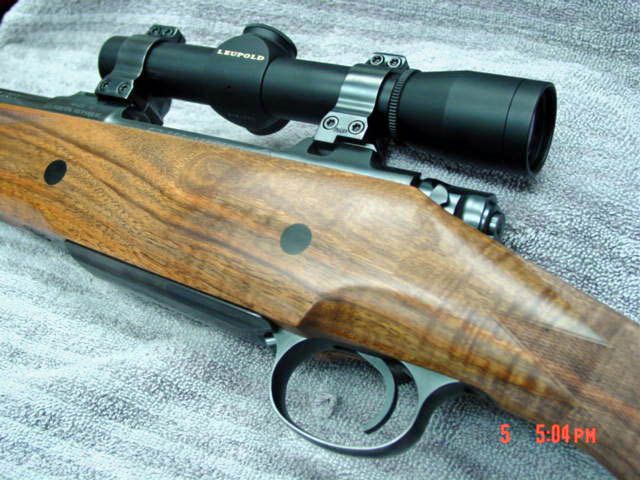AMMA
I'll admit I'm confused. Your initial post asked about installing a cross bolt to "make direct contact with the action's recoil lug" and then your last post says that Mauser actions do not have traditional recoil lugs. I'm curious as to what kind of Mauser action you have. All that I'm aware of have a recoil lug. The original military Mausers had a cross bolt to take the recoil and the commercial versions did too. Most custom rifles built from surplus or commercial actions retained the cross bolt until glass bedding became popular in the 1960s and 1970s. After that time the recoil lug area was routed out and the wood replaced with epoxy creating an interior "cross bolt" that handled the recoil better than a cross bolt could. One reason being that it was darn near impossible to achieve 100% contact between a steel cross bolt and the recoil lug. It sounds like you did exactly that but you added a steel interior bolt behind the epoxy. I'm not sure that really strengthened anything. IMHO you'd have been just as well off to simply route out more wood and make the epoxy bedding that much larger.
Ray
glass bedding alone is insufficient to handle the recoil of large calibers with a military mauser action.
yes i do have full contact between the cross bolt and the action -- it takes some very careful measurement -- and bit of grinding to achieve.
the action itself will be bedded closely, and i am installing a bedded steel post under the rear action screw also. the original mauser has a steel sleeve there, but i am bedding it for additional rigidity.
take a look at any DG rifle built on either commercial or military actions and you will find at least one or perhaps two cross bolts. Unless you are using a commercial stock with a CNC'd aluminum bedding block, you need the crossbolts.
you will eventually crack the stock at the wrist without them. while it may be possible to use steel reinforced epoxy to replace the cross bolt, to infer that it is stronger than a hardened steel bolt is a bit more than the laws of physics would permit.
and, i certainly would not want to bet my life on whether or not the epoxy is sufficient when i face down the cape buff i plan to hunt with this rifle.
a traditional recoil lug would be any lug that sits between the barrel and the action -- as is currently in use on most rifles today. it is a separate piece.
the pseudo recoil lug of a mauser is and extension of the front of the action below the flat bottom of the action, hence my use of the phrase non-tradional.


